
ABOUT
Hanhai Opto-electronic is a major scientific research achievement transformation institution of the Hefei Institute of Physical Science, Chinese Academy of Sciences.
Background Overview
The implementation of the dual-carbon policy is driven by the internal motivation of carbon trading, in addition to external pressure. The scientific and rationality of carbon trading is the prerequisite for the healthy development of the carbon trading market. According to statistics, industry is an important area of carbon emissions, accounting for about 70% of the total emissions. However, there is currently no scientific means to control it, and the inaccuracy of the estimation method is very obvious.
Reliable, accurate, and advanced industrial emission detection technology can provide theoretical basis for scientific calculation methods, prediction models, quantitative evaluation systems for carbon emissions in the carbon pathway, as well as technical systems for carbon indicators, carbon weights, carbon pathway analysis, future quantitative carbon targets, carbon accounting, carbon trading, and carbon emission reduction technologies for various industries and enterprises.
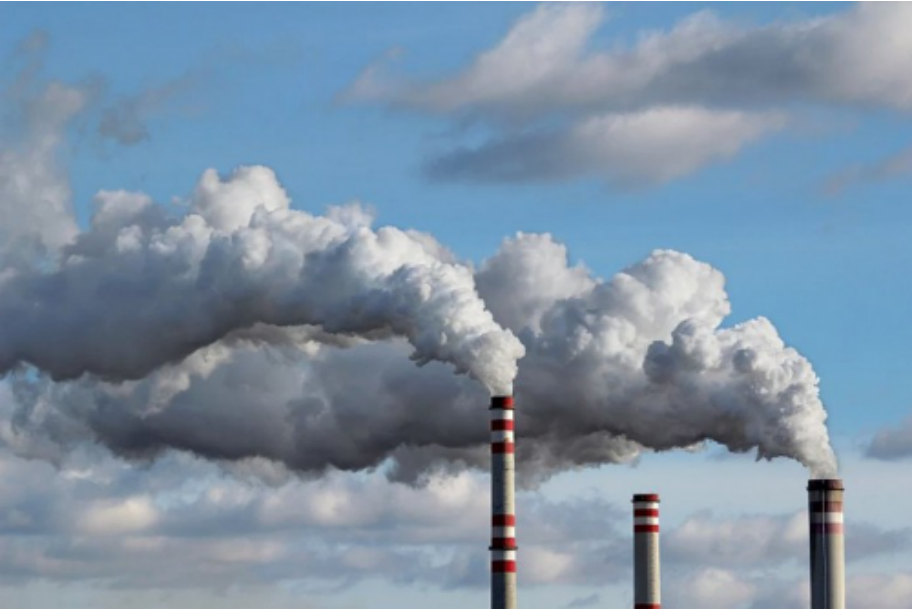
Technological status
Due to the lack of real and effective industrial carbon emission monitoring technology, the country selected 22 pilot units in the power industry in 2021 to explore real and effective carbon emission detection methods. In summary, the currently available industrial carbon emission detection methods mainly include the following

The emission flue gas sampling method is a commonly used detection method, in which gas samples are taken at multiple points in a flue with a cross-section of about 5 square meters, and then the gas samples are detected outside the flue. This method cannot truly reflect the concentration of carbon dioxide emitted from the flue, with large deviations, and cannot achieve online monitoring.
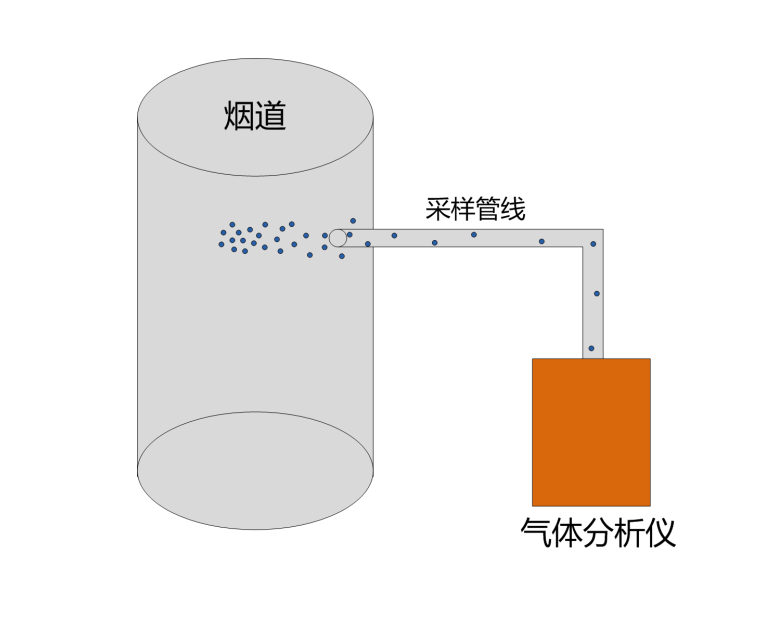
The in-situ detection method of emission flues is more advanced than sampling methods, and laser technology is being used. That is, a probe with a built-in laser is inserted into the flue to detect the concentration of carbon dioxide online. Due to the large vibration of the flue during emission, the probe cannot be inserted far into the flue, so although it is an in-situ detection, it still cannot truly reflect the concentration of carbon dioxide emitted from the flue.
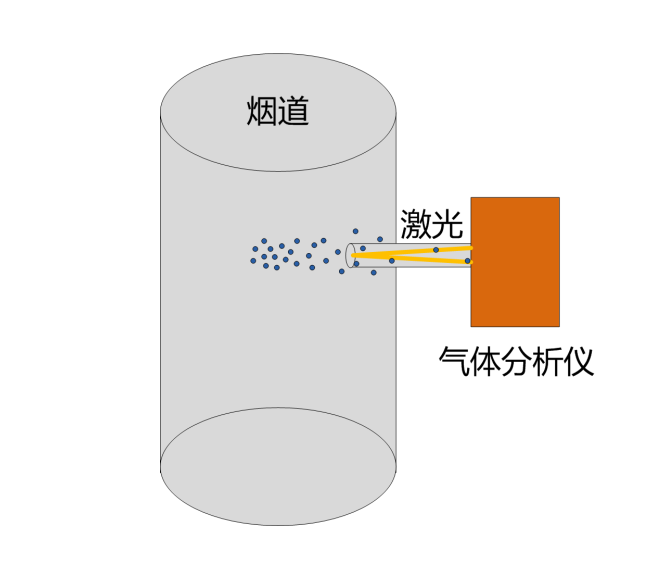
The emission flue diagonal laser detection method is more reliable and realistic than the previous two detection methods. The main providers of this detection method are foreign companies such as ABB and Siemens. The working method is to detect the laser diagonally across a corner of the flue with a cross-section of about 5 meters square, allowing direct reading of the real data of carbon dioxide emissions in the flue section, but still unable to detect the overall real data of flue emissions.
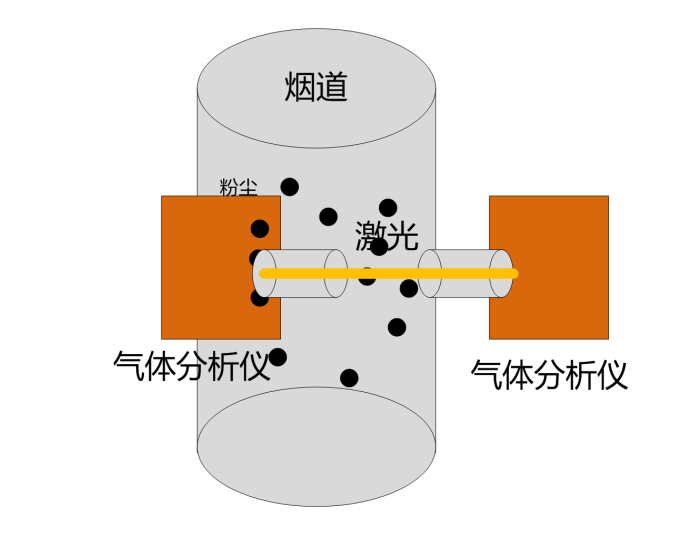
The emission flue penetrating laser detection method is currently the most advanced and reliable flue carbon emission detection method in the world. Its working method is to detect the laser penetrating from one wall of the flue to another wall, obtaining the instantaneous total concentration of carbon dioxide emission from the flue. Online monitoring can truly and reliably calculate the actual emission of carbon dioxide. However, this flue carbon dioxide emission penetrating detection method not only has to overcome the influence of dust, water vapor, vibration and other working conditions, but also must have an extremely high level of extremely weak light signal processing ability, making it extremely difficult to develop.
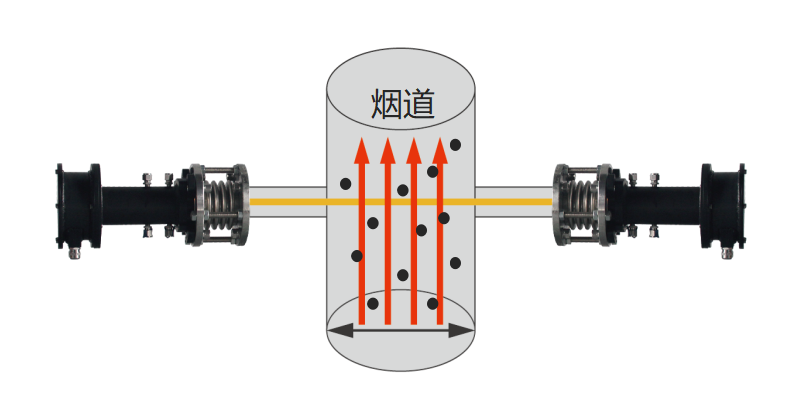
Solution for
Organized emission monitoring method - in-situ penetration laser gas analyzer
For power plants, garbage disposal plants and other scenarios with organized emissions, in-situ through-type laser gas analyzers can be installed on the flue to directly monitor the gas conditions inside the flue online. The emission device emits laser light through the entire pipeline section, and the receiving device at the other end receives the detection laser. This can directly detect carbon dioxide without sampling, avoiding sampling errors during sampling that affect the analysis results, and can reflect the gas conditions inside the pipeline most authentically. It can perform real-time online monitoring of gases such as methane, oxygen, ethylene, acetylene, carbon monoxide, ammonia, hydrogen fluoride, hydrogen chloride, etc.
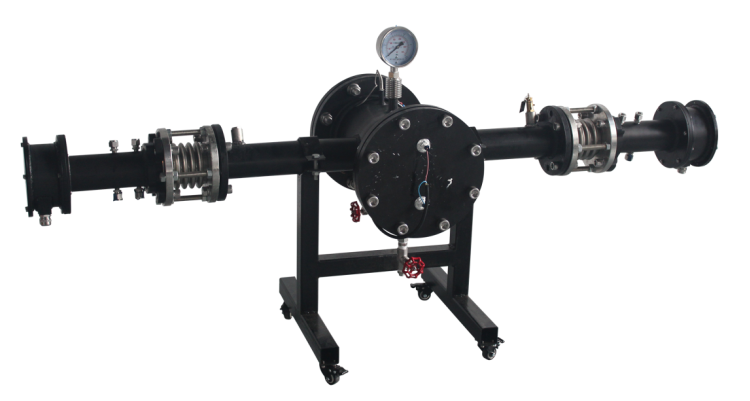
In-situ penetrating laser gas analyzer

Schematic diagram of the in-situ penetration laser gas analyzer
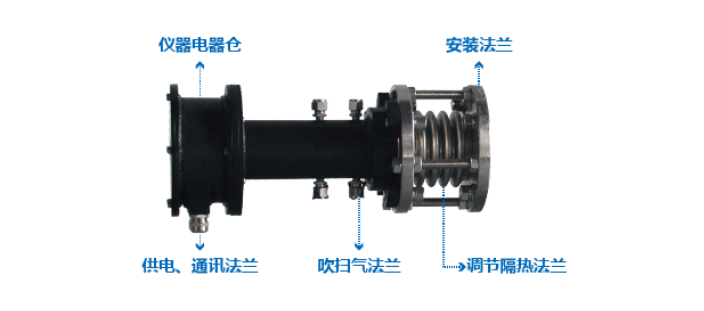
Installation method of in-situ penetrating laser gas analyzer
Unorganized emission monitoring method - fixed reflective laser gas remote meter
For monitoring unorganized emissions of CH4 and CO2 in open areas and parks for oil and gas exploration, fixed reflective laser gas remote sensors can be used. By setting up the area in a real-time manner, the gas concentration and emission time generated within the fixed area can be monitored, allowing the emission data per square meter and per day to be calculated.
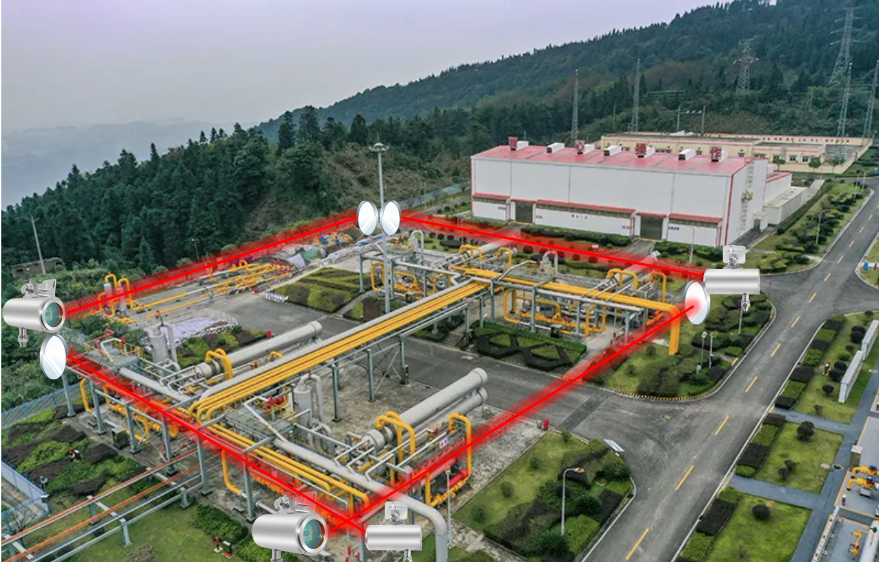
Key area monitoring - Internet of Things laser gas leak detector
For some areas that require point-based monitoring, an Internet of Things (IoT) laser gas leak detector can be used. The IoT laser gas leak detector is a laser monitoring product that integrates laser absorption spectroscopy gas detection technology (TDLAS), low-power technology, and Internet of Things technology. This series of products can be transmitted to the monitoring platform through IoT communication, enabling real-time, fast, long-distance, and accurate monitoring of trace gas leaks in enclosed and semi-enclosed spaces.

Greenhouse gas monitoring
In addition to monitoring emissions, laser absorption spectroscopy technology can also be applied to the monitoring of atmospheric greenhouse gases such as methane and carbon dioxide. Laser absorption spectroscopy has high resolution and repeatability, and can monitor long-term trace changes in atmospheric greenhouse gases such as methane and carbon dioxide.
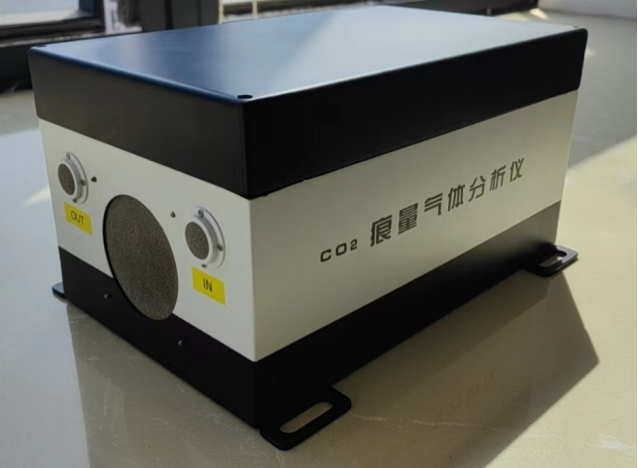
For extremely high-precision greenhouse gas monitoring, it is also possible to use the decay oscillating spectroscopy technology, with an optical path of up to 60km and a resolution of ppb level, which can completely replace the picarro greenhouse gas monitoring equipment.
Typical cases
The fourth largest garbage power plant in China - Henan Jiaozuo Garbage Power Plant
In August 2022, Hanhai's in-situ through-type laser gas analyzer was installed and operated at Henan Jiaozuo Waste Power Plant, the fourth largest waste power plant in China, to achieve online monitoring of carbon emissions and ammonia escape. The test data was far superior to that of imported equipment running on the same machine. The on-site measurement installed a flue through-type laser detection system for real-time monitoring of carbon dioxide concentration on the emission flue of No. 1 boiler in the power plant, and installed a flue through-type laser detection system for real-time monitoring of ammonia escape concentration on the emission flue of No. 2 boiler. The diameter of the entire flue was 3 meters in a circular shape. To ensure the stability of the monitoring data, the equipment was installed at a height of 32 meters where the emission airflow was relatively stable.
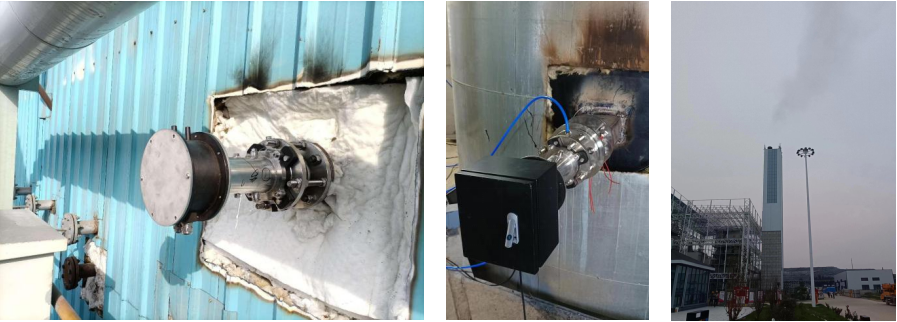
To solve the problem of misalignment of the transmitter and receiver caused by vibration and deformation of the flue wall after long-term operation, and to solve the problem of water vapor and dust in the flue gas affecting the detection laser penetrating throughout the flue, a dustproof, waterproof vapor, vibration-proof, and deformation-proof structure is installed inside the flue to ensure the long-term stability of the equipment.

At the same time, in order to ensure the long-term operation of optical components without being contaminated by water vapor and dust in the flue, the existing instrument air in the power plant is used to regularly purge the optical window at the optical window.
The monitoring results are displayed on the on-site instruments and transmitted to the monitoring system in the power plant through optical fiber, achieving docking with the production system in the plant.
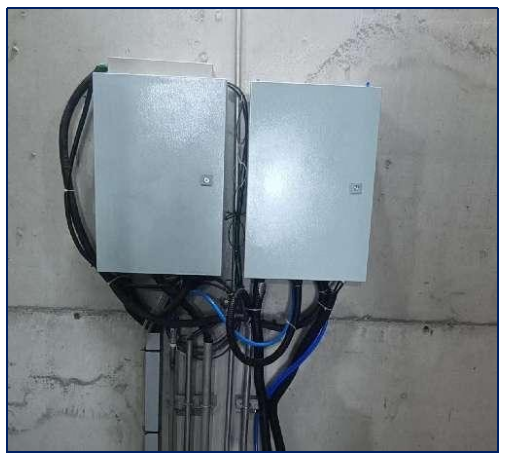
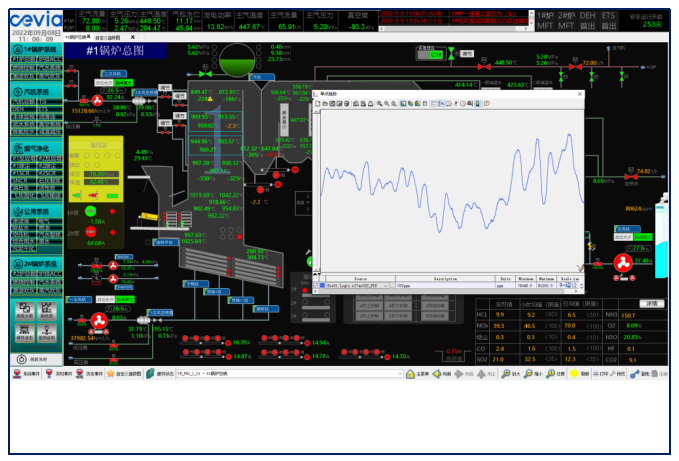
The monitoring process begins with the start-up phase of the boiler and continues through the stable operation phase. During the start-up phase, data observation shows that the carbon dioxide concentration ranges from 8600-9500ppm and the ammonia concentration ranges from 2.6-3.2ppm. When the boiler reaches the stable operation phase, the concentration slightly increases, with a range of 8900-10400ppm and 2.9-4.4ppm.
Compared with the carbon dioxide monitoring results of the ABB-produced extraction sampling CEMS system installed according to environmental protection requirements, the carbon dioxide level is 400-600ppm higher.
The results are consistent with the fact that the concentration of the gas sample flow extracted by the air extraction sampling method is low when it flows along the entire flue edge, and there is a loss of gas through the sampling gas path, resulting in a lower concentration. At the same time, this detection result proves that due to the adsorption characteristics of carbon dioxide, the air extraction sampling method will result in a large concentration loss.


TEL:400-055-1239 (9:00~17:00)
MAIL:lisghanhai@gkhhlaser.com
ADDR:302 Floor, Building 5, No. 18, Kechuang 13th Street, Beijing Economic and Technological Development Zone
